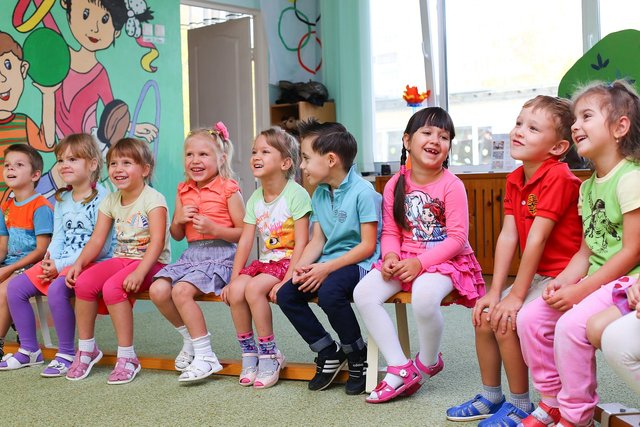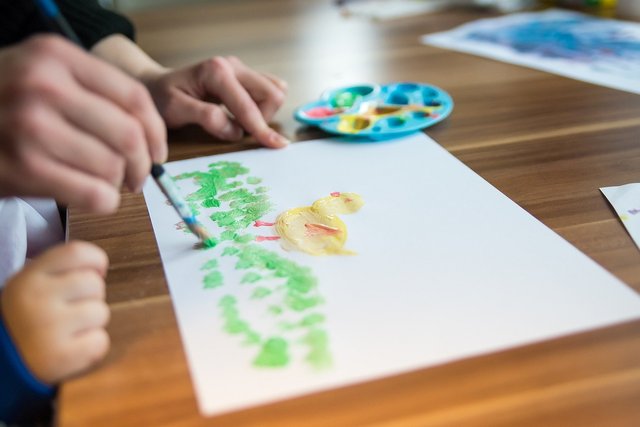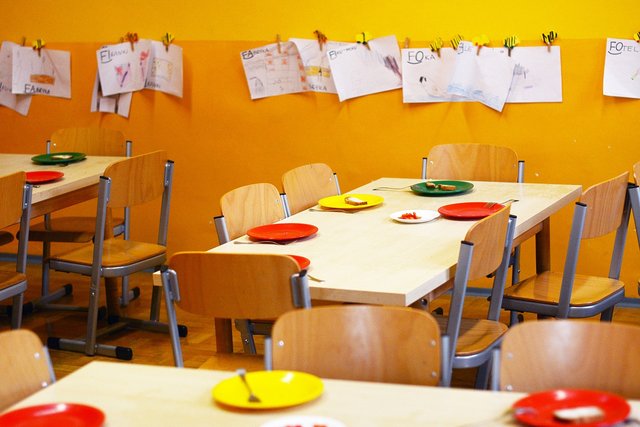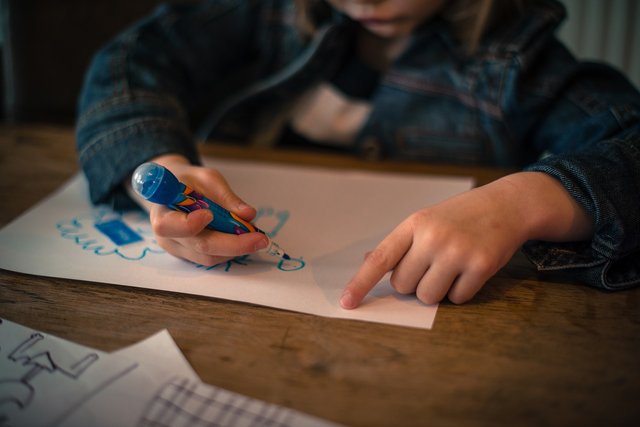The Learning Paths
The concept of accompaniment to study starts from a pedagogical concept of autonomy and responsibility, in which each child becomes an active protagonist of his own learning path.

Credits
This space, specifically dedicated to daily study can be considered as an upgrade path, aimed at promoting a strategic and metacognitive attitude in the students.
First of all, let us look at the term "metacognition" indicates the ability to understand the functioning of one's own mental processes (such as memory, attention, etc.), exercising control over them.
A metacognitive student is able to plan and organize activities to be carried out, because he is aware of the level of commitment required by each subject. As specified in the following paragraphs, this purpose is embodied in the ability of the children to know how to identify their own critical points and their strengths and carry out a self-assessment on their work.
In this process educators will take on the role of facilitator, providing the student with temporary help that will lead, even with different and personalized strategies, to achieving a common goal: autonomy

Credits
Objectives of the accompaniment to the study
The objectives that we aim to achieve through a path to accompany learning are:
Welcome the student in a rich and stimulating environment
Improve the strategies and the method of study
- Promote metacognitive knowledge, awareness and control
- Promote pro-social attitudes within small work groups
- Promote learning through new technologies
- To foster a good collaboration between boy, family, school and professional.
- Promote self-esteem and the student's perception of competence.
The different points will be examined below, providing you with a series of operational guidelines. These should not be taken as a rigid list of operations to be followed, rather as a useful tool for the entire working group to share a common methodology and language from which to start and then change according to their needs.

Credits
Setting up and reception
By setting i mean the arrangement of a structured physical space in order to offer the student a series of visible and handy reference points (books, pens, colors, sheets, extra material, etc.). In a path to accompany the study , having everything you need in a specially set up environment creates the necessary conditions for the maintenance of ' attention , offering each child the ability to independently manage the reorganization of the material used and the spaces in common.
By setting i also mean a mental space at the beginning of the activities, in which the students can plan and organize the tasks according to their needs or difficulties. I think that a work of this kind is able to favor in each students a more responsible and autonomous attitude, as well as less delegating.
To this end we create a daily planning in which the subjects to be done before and those to be done are listed in a specially structured table, according to the order chosen by each one. For each subject it is possible to indicate the estimated time for the performance, the time actually used (at the end of the activity), strengths, criticalities and a final self-assessment. Each student keeps the table in front of him while he performs the tasks and updates it during the activity: at the end the delivery to the operators, the educator will keep it with the aim of monitoring the self-assessment capacity and the strategies implemented.
Strategies and method of study
Strategies are procedures that the student performs and consciously controls with the purpose of learning.
The educator, in the process of accompanying in study , addresses the student in the use of effective learning strategies, in case there is a need for support.
Some of the strategies are able to produce more relevant changes in the study mechanism of kids, they are:
use diagrams or drawings as visual supports;
ask questions during the reading;
schematically represent the content of the text;use mental images.
The approach described in this article aims to offer an alternative solution to the classic study method, valid for everyone. The goal is to make the student sensitive to his own style of learning, offering him an adequate repertoire of integrable or alternative strategies, so that he himself can decide the most suitable one. The effectiveness of the strategies used will be subsequently monitored and evaluated by the tutor who is in charge of accompanying the study on the basis of the following criteria:
Does the strategy improve school performance?
Does the strategy reduce the effort in the study?
Does the strategy allow the generalization of learning?

Credits
Tools to promote metacognitive knowledge
The aspects on which we will focus our attention are:
Metacognitive knowledge, that is the awareness that every child has about the functioning of his mind.
The strategic use of the metacognitive control processes exercised on one's own cognitive processes. Specifically, we refer to the understanding of the task and its difficulty, the choice of the path to follow to address it (strategies to be adopted), the planning of the phases of the task to be performed, the prediction of the final outcome, the monitoring of the process, the evaluation results and progress achieved.
In a path to accompany study , some useful tools to sort the study material, operate classifications and memorize are definitely the schematization and the maps. These tools have the advantage of combining the visual code with a few written words, favoring the retrieval of information, the logical links, ordering the presentation of the arguments by means of key words and fundamental concepts.
While the free schematizations are spontaneous, personal and do not follow particular guiding criteria, the maps are instead the result of theoretical models and reflections on their applicability in school and are divided into: mental and conceptual maps, structural maps.

Credits
Socialization and comparison with peers
The accompanying path to study described here starts from the assumption that favoring prosocial attitudes within the group can contribute not only to preventing situations of confrontation (sometimes necessary for the consolidation of the group), but also to improve the learning context.
The methods we propose to enhance learning with peer support are: cooperative learning (collaborative learning in small groups) and tutoring (tutoring).
The cooperative learning is based on work in small teams of a few items, four or five at the most, heterogeneous inside them for cognitive and social skills. Each group will be composed either by the student with behavioral or learning problems, or by the diligent and good mediator. The group's reference operator will undertake to enforce the conditions necessary for the consolidation of an effective group, which are:
Positive interdependence, understood as the sharing of paths and objectives to be achieved. To this end, i propose dividing the groups by thematic tables (such as the group that makes history, mathematics, geography, science .etc.) by age, or by class.
Promotional interaction, understood as a welfare situation in which attitudes of collaboration, support and help prevail in a context of trust and mutual respect.
The model of tutoring provides that a skilled and intelligent kids , carries out an individual teaching activity, or in a small group (maximum three students). Unlike collaborative learning , in which everyone is considered a depository of resources to be able to put at the service of the common good, tutoring is based on the assumption that the student who "has more" gives the others who has "less" . The companion who helps develops a strong sense of responsibility, self-confidence and self-fulfillment, becoming master of their knowledge and their moods. In a path to accompany the study, it is important to choose carefully the young people who will play the role of tutor, preparing a rapid training course that is structured not so much on the disciplinary fields, but on teaching techniques such as management of reinforcements and aid, feedback, and possibly the use of technologies.
Big Thanks to @enginewitty for this cool Banner
Your Vote can change Everything. Vote Witnesses:





WARNING! The comment below by @ilhamyus leads to a known phishing site that could steal your account.
Do not open links from users you do not trust. Do not provide your private keys to any third party websites.
@mukhtarilyas, mentoring is done to obtain an effective learning strategy. @afifa, we must give children the freedom to dissolve in their own learning styles. ie whether a visual, audio or kinesthetic style. but also difficult if we get a class that is not homogeneous.
Great post!
Thanks for tasting the eden!
To listen to the audio version of this article click on the play image.

Brought to you by @tts. If you find it useful please consider upvote this reply.
I love how you incorporated cooperative learning here in your post! Thanks for sharing.
You've been upvoted by TeamMalaysia Community :-
To support the growth of TeamMalaysia Follow our upvotes by using steemauto.com and follow trail of @myach
Vote TeamMalaysia witness bitrocker2020 using this link vote for witness
Free Daily Upvote and Get 0.1 Steem Just To Sign up!
affiliatemarketer.website